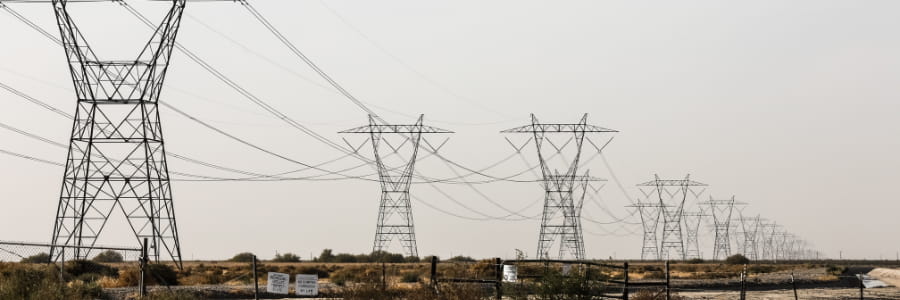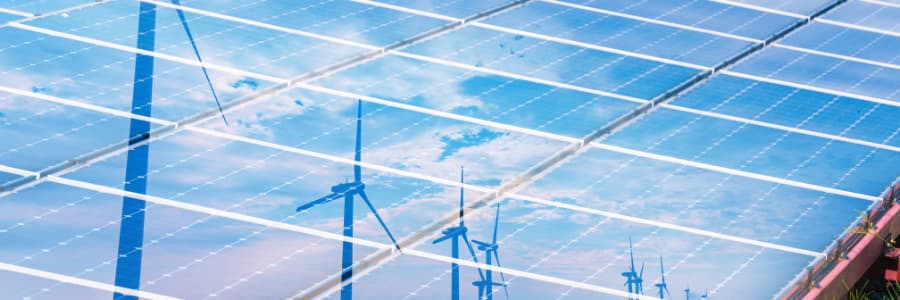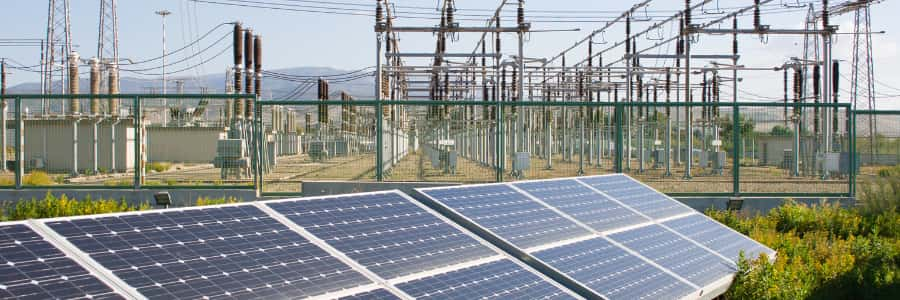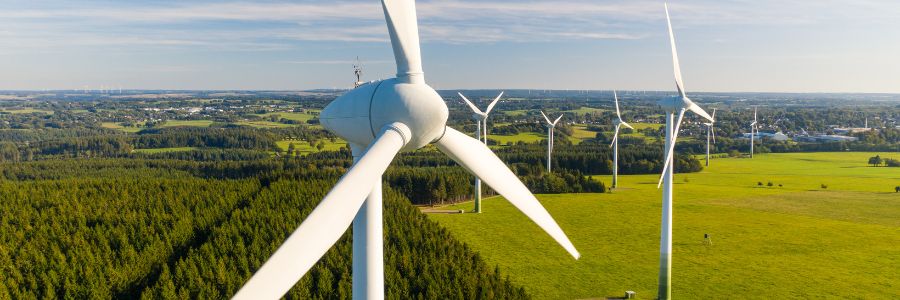Intermittent energy sources like wind and solar and rising electrification are leading to increased needs for grid flexibility.
New challenges and opportunities appear in the emerging new reality for energy companies and their customers.
The need for energy is growing, energy production is evolving, and electric vehicles are gaining popularity. So, how can utilities and the energy grid keep pace?
A large component of the answer revolves around grid flexibility.

When we talk about grid flexibility, sometimes referred to simply as flexibility, we are talking about an electricity system’s ability to manage supply and demand variability and uncertainty. It includes adjusting energy generation, consumption, and storage in response to real-time conditions.
When talking about electricity in this context, it can be important to distinguish between the stress that power (Watts) and energy (Watt-hours) can put on the grid at a specific time or over a given period.
One helpful image is to think of a car (perhaps an EV) driving down a road. Here, Watts represents the speed at any given moment, while Watt-hours represent the distance covered over a given period.

Grid flexibility covers many different components of an electricity grid. These include electricity production systems (power plants, wind turbines, solar panels, etc.), transmission (power lines and transformer stations, etc.), storage (batteries, pumped hydro, and possibly EVs), and consumption (homes, building complexes, factories, and more).
Other vital components include control systems for flexible generation, demand response, grid infrastructure upgrades, and software systems. Each element can help boost a grid’s ability to adapt to changing conditions.
EVs also play an active role, as do electric units in homes and offices through smart meters.
Distributed energy resources (DERs) and linked distributed energy resource management systems (DERMS) are also playing an increasing role.

All flexibility components and solutions have a common goal: using existing grid elements to the greatest extent possible. This has become increasingly important as grid infrastructure is struggling in many places.
Grid infrastructure is challenged by increased electricity needs, including from EVs, more people producing and selling power to the grid, intermittent energy production from renewables, and more.
This leaves energy companies and grid operators with two options. One is to build out the grid, which will cost a lot of money. The other is to invest in innovative ways of increasing flexibility and capacity for the existing grid.

Traditional power production has come from fossil fuel power stations. They deliver a stable, predictable output. In contrast, renewable energy sources tend to fluctuate. While renewables are unquestionably a significant step forward, matching fluctuating energy production to energy needs can be challenging.
The energy grid has also not been designed for the surge in energy demand we see across our societies. Put bluntly, if everyone uses heat pumps simultaneously charging electric vehicles, the surges could cripple the grid.

Imagine a series of levers that energy companies and grid operators can adjust. This is, on a basic level, how they manage grid flexibility.
One example of a lever is managed EV charging. Here, an energy company adjusts charging for groups of EVs in ways that lower stress on the grid. As a bonus, EV owners get cheaper (and often more climate-friendly) charging, and the vehicles are ready for use when needed.
Another lever is smart meters and intelligent home systems that can adjust consumption to balance the grid during peak times. Again, consumers will generally see their energy bills decrease as a result.
These adjustments help energy companies increase grid resilience, load balancing ability, support frequency regulation and more.

In short, we all can.
The many different solutions and approaches help avoid expensive grid expansions that cost energy companies – and by extension also their customers – vast sums.
By supporting grid flexibility, energy companies can increase operational efficiency, better integrate renewable energy, and enhance service reliability while opening new business opportunities in flexibility services and markets.
For power customers, supporting grid flexibility by making your energy use more flexible is an active way to support renewables, increase energy reliability for their own use, and help keep energy prices low. It can also, in some instances, lead to opportunities to participate in demand response programs that equal energy savings or even earning opportunities.

Given the vast upsides, grid flexibility is developing rapidly, with new business models, solutions, and investments happening continuously.
One significant ongoing trend revolves around how to best integrate more renewable energy. This includes energy storage initiatives and incentive programs to move energy use to times when renewable energy production is high.
Another major trend explored by energy companies is using real-time data from sensors such as smart meters to support grid flexibility. This forms part of a broader digitalisation trend that includes virtual power plants (VPP).
Simultaneously, there is strong growth of distributed energy resources (DERs) and connected distributed energy resource management systems (DERMS) that ensure optimal operation of distributed energy production units like solar panels in a given area.
Finally, the rise in electric vehicle adoption holds vast potential for making the grid – and energy use – more flexible through advanced smart charging.

Most EVs spend most of their time standing still, which is fantastic from a flexibility standpoint. By automating EV charging in ways that maximise renewable energy and support grid flexibility, energy companies have access to one of the most potent grid flexibility tools.
Using advanced smart charging, EVs can be leveraged for peak load balancing and peak load shaving and generally increase grid flexibility.
EV fleets provide a similar benefit, with their concentrated energy demands providing extra opportunities for grid flexibility.
Distributed energy systems, including solar panels and wind turbines, introduce variability into the grid. However, they also offer localised generation, reducing transmission losses and enhancing grid resilience.
When electricity is produced closer to the power customers, or even by the power customers themselves, it limits the distance energy has to move. It can also affect the power transmission needs (how big “pipes” are needed to transport energy).
In this way, prosumers participating in DER networks can help provide grid flexibility with their energy production.
This depends on the necessary infrastructure, including DERMS solutions and other software solutions, to support the integration of various distributed energy resources, provide real-time data, optimise their performance and contribution to grid stability, and more.

Grid flexibility is a cornerstone of the transition to a resilient, sustainable, and efficient energy system with renewable energy at its core. Its components, challenges, and opportunities illustrate that grid flexibility is a multidimensional undertaking that relies on turning challenges into opportunities.
One clear example is the rise of EVs. Without advanced solutions, grid operators and energy companies risk EVs becoming a roadblock for integrating more renewable energy and a risk to grid stability. However, the proper solutions change EVs to a core grid flexibility and stability asset.